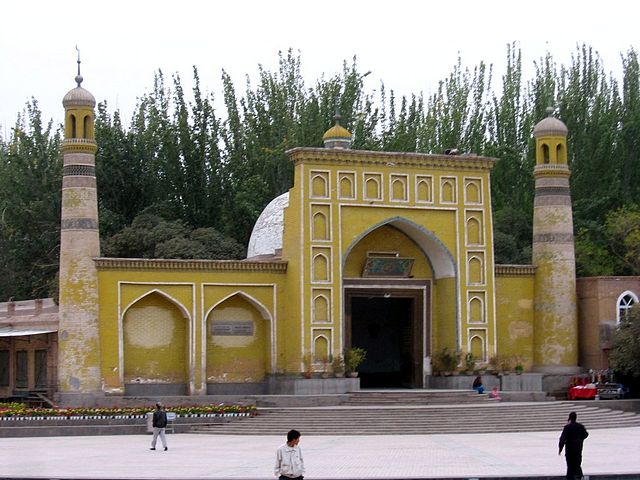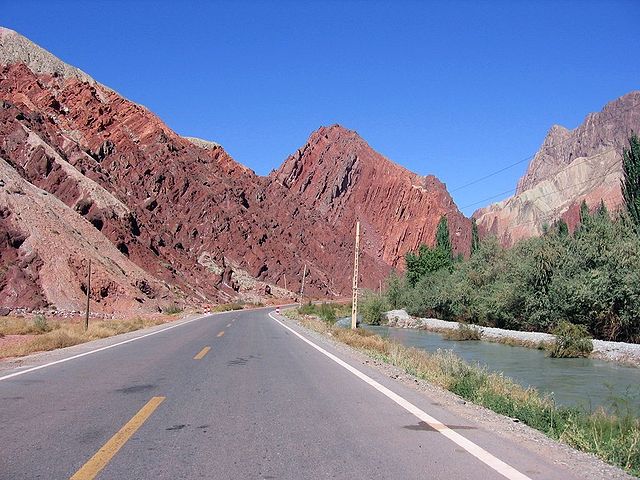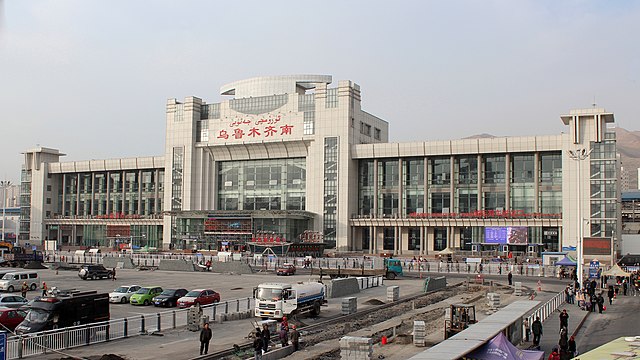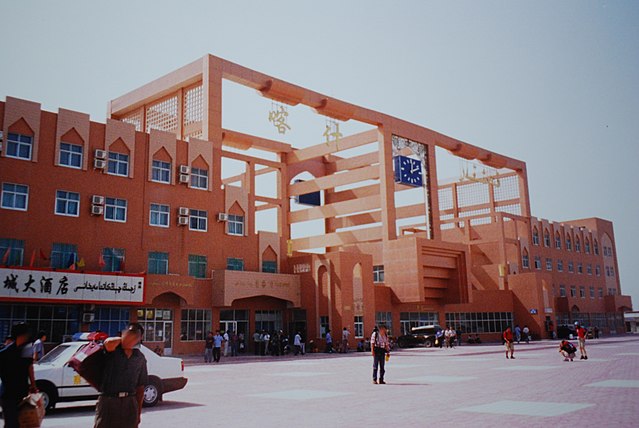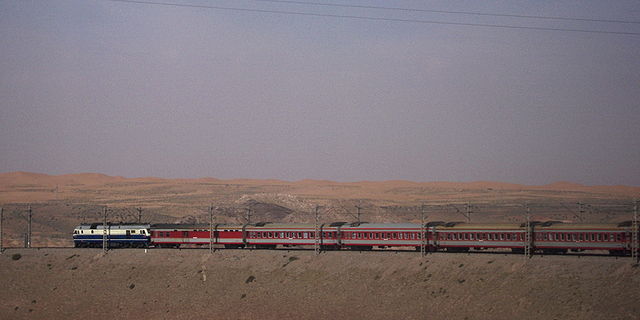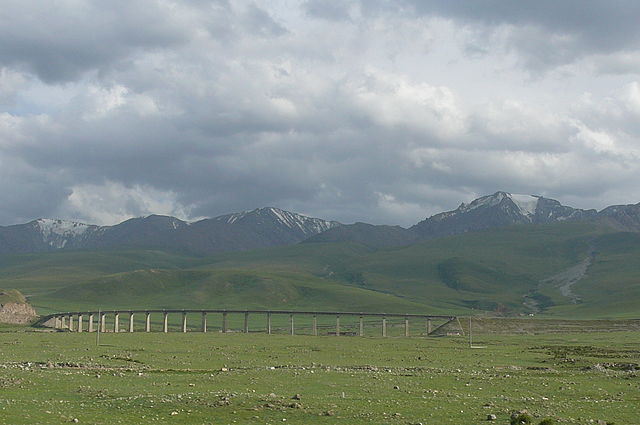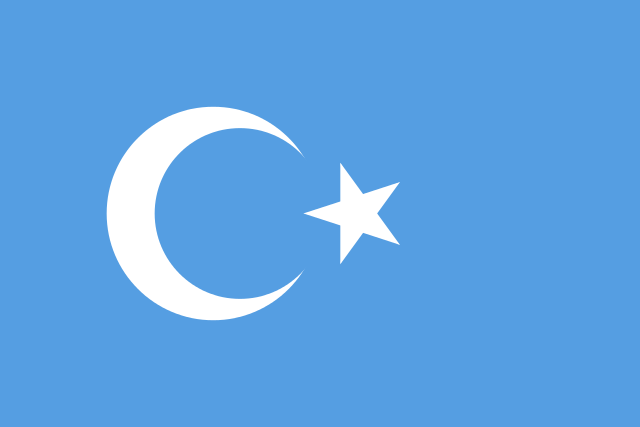
| XINJIANG
Flaming Mountains
Turfan Afaq Khoja Mausoleum
Kashgar Grand Bazaar Ürümqi
Hotan
Karakul Lake and Muztagh Ata
Map showing the location of the Xinjiang Uygur Autonomous Region Xinjiang (SASM/GNC: Xinjang; Chinese: pinyin: Xinjiang; alternately romanized as Sinkiang), officially Xinjiang Uyghur Autonomous Region (XUAR), is an autonomous region of the People's Republic of China (PRC), located in the northwest of the country close to Central Asia. Being the largest province-level division of China and the 8th-largest country subdivision in the world, Xinjiang spans over 1.6 million km2 (640,000 square miles), and has about 25 million inhabitants.
Xinjiang borders the countries of Mongolia, Russia, Kazakhstan, Kyrgyzstan, Tajikistan, Afghanistan, Pakistan and India. The rugged Karakoram, Kunlun and Tian Shan mountain ranges occupy much of Xinjiang's borders, as well as its western and southern regions. The Aksai Chin region, administered by China mostly as part of Xinjiang's Hotan Prefecture, is claimed by India. Xinjiang also borders the Tibet Autonomous Region and the provinces of Gansu and Qinghai. The most well-known route of the historical Silk Road ran through the territory from the east to its northwestern border.
It is home to a number of ethnic groups, including the Turkic Uyghur, Kazakhs and Kyrgyz, the Han, Tibetans, Hui, Tajiks, Mongols, Russians and Xibe. More than a dozen autonomous prefectures and counties for minorities are in Xinjiang. Xinjiang is also referred to as Chinese Turkestan, East Turkestan and East Turkistan. Xinjiang is divided into the Dzungarian Basin in the north and the Tarim Basin in the south by a mountain range. Only about 9.7% of Xinjiang's land area is fit for human habitation.
With a documented history of at least 2,500 years, a succession of people and empires have vied for control over all or parts of this territory. The territory came under the rule of the Qing dynasty in the 18th century, later replaced by the Republic of China government. Since 1949, it has been part of the People's Republic of China following the Chinese Civil War. In 1954, Xinjiang Bingtuan was set up to strengthen the border defense against the Soviet Union and also promote the local economy. In 1955, Xinjiang was administratively changed from a province into an autonomous region. In recent decades, abundant oil and mineral reserves have been found in Xinjiang and it is currently China's largest natural gas-producing region. In the 1990s and 2000s, the East Turkestan independence movement, separatist conflict and the influence of radical Islam have resulted in unrest in the region with occasional terrorist attacks and clashes between separatist and government forces.
Names :
The general region of Xinjiang has been known by many different names in earlier times, in indigenous languages as well as other languages. These names include Altishahr, the historical Uyghur name for the southern half of the region referring to "the six cities" of the Tarim Basin, as well as Khotan, Khotay, Chinese Tartary, High Tartary, East Chagatay (it was the eastern part of the Chagatai Khanate), Moghulistan ("land of the Mongols"), Kashgaria, Little Bokhara, Serindia (due to Indian cultural influence) and, in Chinese, "Western Regions".
In Chinese, under the Han dynasty, Xinjiang was known as Xiyu, meaning "Western Regions". Between the 2nd century BCE and 2nd century CE the Han Empire established the Protectorate of the Western Regions or Xiyu Protectorate in an effort to secure the profitable routes of the Silk Road. The Western Regions during the Tang era were known as Qixi. Qi refers to the Gobi Desert while Xi refers to the west. The Tang Empire had established the Protectorate General to Pacify the West or Anxi Protectorate in 640 to control the region. During the Qing dynasty, the northern part of Xinjiang, Dzungaria was known as Zhunbu ("Dzungar region") and the southern Tarim Basin was known as Huijiang ("Muslim Frontier") before both regions were merged and became the region of "Xiyu Xinjiang", later simplified as "Xinjiang".
The current Mandarin Chinese-derived name Xinjiang (Sinkiang), which literally means "New Frontier", "New Borderland" or "New Territory", was given during the Qing dynasty by the Qianlong Emperor. According to Chinese statesman Zuo Zongtang's report to the Emperor of Qing, Xinjiang means an "old land newly returned" or the "new old land".
The term was also given to other areas conquered by Chinese empires, for instance, present-day Jinchuan County was then known as "Jinchuan Xinjiang". In the same manner, present-day Xinjiang was known as Xiyu Xinjiang (lit.: 'Western Regions' New Frontier') and Gansu Xinjiang (lit.: 'Gansu Province's New Frontier', especially for present-day eastern Xinjiang).[citation needed]
In 1955, Xinjiang Province was renamed "Xinjiang Uygur Autonomous Region". The name that was originally proposed was simply "Xinjiang Autonomous Region". Saifuddin Azizi, the first chairman of Xinjiang, registered his strong objections to the proposed name with Mao Zedong, arguing that "autonomy is not given to mountains and rivers. It is given to particular nationalities." As a result, the administrative region would be named "Xinjiang Uygur Autonomous Region".
Description :
Dzungaria (Red) and the Tarim Basin or Altishahr (Blue)
Northern Xinjiang (Junggar Basin) (Yellow), Eastern Xinjiang- Turpan Depression (Turpan Prefecture and Hami Prefecture) (Red) and Altishahr/the Tarim Basin (Blue)
Physical map showing the separation of Dzungaria and the Tarim Basin (Altishahr) by the Tien Shan Mountains Xinjiang consists of two main geographically, historically and ethnically distinct regions with different historical names, Dzungaria north of the Tianshan Mountains and the Tarim Basin south of the Tianshan Mountains, before Qing China unified them into one political entity called Xinjiang Province in 1884. At the time of the Qing conquest in 1759, Dzungaria was inhabited by steppe dwelling, nomadic Tibetan Buddhist Dzungar people, while the Tarim Basin was inhabited by sedentary, oasis dwelling, Turkic-speaking Muslim farmers, now known as the Uyghur people. They were governed separately until 1884. The native Uyghur name for the Tarim Basin is Altishahr.
The Qing dynasty was well aware of the differences between the former Buddhist Mongol area to the north of the Tian Shan and the Turkic Muslim area south of the Tian Shan and ruled them in separate administrative units at first. However, Qing people began to think of both areas as part of one distinct region called Xinjiang. The very concept of Xinjiang as one distinct geographic identity was created by the Qing. It was originally not the native inhabitants who viewed it that way, but rather the Chinese who held that point of view. During the Qing rule, no sense of "regional identity" was held by ordinary Xinjiang people; rather, Xinjiang's distinct identity was given to the region by the Qing, since it had distinct geography, history and culture, while at the same time it was created by the Chinese, multicultural, settled by Han and Hui and separated from Central Asia for over a century and a half.
In the late 19th century, it was still being proposed by some people that two separate regions be created out of Xinjiang, the area north of the Tianshan and the area south of the Tianshan, while it was being argued over whether to turn Xinjiang into a province.
Xinjiang is a large, sparsely populated area, spanning over 1.6 million km2 (comparable in size to Iran), which takes up about one sixth of the country's territory. Xinjiang borders the Tibet Autonomous Region and India's Leh District to the south and Qinghai and Gansu provinces to the southeast, Mongolia to the east, Russia's Altai Republic to the north and Kazakhstan, Kyrgyzstan, Tajikistan, Afghanistan, Pakistan and India to the west.
The east-west chain of the Tian Shan separate Dzungaria in the north from the Tarim Basin in the south. Dzungaria is a dry steppe and the Tarim Basin contains the massive Taklamakan Desert, surrounded by oases. In the east is the Turpan Depression. In the west, the Tian Shan split, forming the Ili River valley.
History
:
The Roman Empire and the Han Empire around AD 1 According to J. P. Mallory and Victor H. Mair, the Chinese describe the existence of "white people with long hair" or the Bai people in the Shan Hai Jing, who lived beyond their northwestern border.
The well-preserved Tarim mummies with Caucasoid features, often with reddish or blond hair, today displayed at the Ürümqi Museum and dated to the 2nd millennium BC (4000 years ago), have been found in the same area of the Tarim Basin. Between 2009–2015, the remains of 92 individuals found at the Xiaohe Tomb complex were analyzed for Y-DNA and mtDNA markers. Genetic analyses of the mummies showed that the maternal lineages of the Xiaohe people originated from both East Asia and West Eurasia, whereas the paternal lineages all originated from West Eurasia.
Various nomadic tribes, such as the Yuezhi, Saka, and Wusun were probably part of the migration of Indo-European speakers who were settled in eastern Central Asia (possibly as far as Gansu) at that time. The Ordos culture in northern China east of the Yuezhi, is another example. By the time the Han dynasty under Emperor Wu (r. 141–87 BC) wrestled the Western Regions of the Tarim Basin away from its previous overlords, the Xiongnu, it was inhabited by various peoples, such as Indo-European Tocharians in Turfan and Kucha and Indo-Iranian Saka peoples centered around Kashgar and Khotan.
Nomadic cultures such as the Yuezhi (Rouzhi) are documented in the area of Xinjiang where the first known reference to the Yuezhi was made in 645 BC by the Chinese chancellor Guan Zhong in his work Guanzi (Guanzi Essays: 73: 78: 80: 81). He described the Yúshì (or Niúshì), as a people from the north-west who supplied jade to the Chinese from the nearby mountains (also known as Yushi) in Gansu. The supply of jade from the Tarim Basin from ancient times is well documented archaeologically: "It is well known that ancient Chinese rulers had a strong attachment to jade. All of the jade items excavated from the tomb of Fuhao of the Shang dynasty, more than 750 pieces, were from Khotan in modern Xinjiang. As early as the mid-first millennium BC, the Yuezhi engaged in the jade trade, of which the major consumers were the rulers of agricultural China."
Traversed by the Northern Silk Road, the Tarim and Dzungaria regions were known as the Western Regions. It was inhabited by various peoples, including Indo-European Tocharians in Turfan and Kucha and Indo-Iranian Saka peoples centered around Kashgar and Khotan. At the beginning of the Han dynasty (206 BC-AD 220), the region was subservient to the Xiongnu, a powerful nomadic people based in modern Mongolia. In the 2nd century BC, the Han dynasty made preparations for war against Xiongnu when Emperor Wu of Han dispatched the explorer Zhang Qian to explore the mysterious kingdoms to the west and to form an alliance with the Yuezhi people in order to combat the Xiongnu. As a result of these battles, the Chinese controlled the strategic region from the Ordos and Gansu corridor to Lop Nor. They succeeded in separating the Xiongnu from the Qiang peoples to the south, and also gained direct access to the Western Regions. Han China sent Zhang Qian as an envoy to the states in the region, beginning several decades of struggle between the Xiongnu and Han China over dominance of the region, eventually ending in Chinese success. In 60 BC Han China established the Protectorate of the Western Regions at Wulei (near modern Luntai) to oversee the entire region as far west as the Pamir Mountains, which would remain under the influence and suzerainty of the Han dynasty with some interruptions. For instance, it fell out of their control during the civil war against Wang Mang (r. AD 9–23). It was brought back under Han control in AD 91 due to the efforts of the general Ban Chao.
The Tarim Basin in the 3rd century The Western Jin dynasty succumbed to successive waves of invasions by nomads from the north at the beginning of the 4th century. The short-lived kingdoms that ruled northwestern China one after the other, including Former Liang, Former Qin, Later Liang, and Western Liáng, all attempted to maintain the protectorate, with varying degrees of success. After the final reunification of northern China under the Northern Wei empire, its protectorate controlled what is now the southeastern region of Xinjiang. Local states such as Shule, Yutian, Guizi and Qiemo controlled the western region, while the central region around Turpan was controlled by Gaochang, remnants of a state (Northern Liang) that once ruled part of what is now Gansu province in northwestern China.
A Sogdian man on a Bactrian camel, sancai ceramic statuette, Tang dynasty During the Tang dynasty, a series of expeditions were conducted against the Western Turkic Khaganate, and their vassals, the oasis states of southern Xinjiang. Campaigns against the oasis states began under Emperor Taizong with the annexation of Gaochang in 640. The nearby kingdom of Karasahr was captured by the Tang in 644 and the kingdom of Kucha was conquered in 649. The Tang Dynasty then established the Protectorate General to Pacify the West or Anxi Protectorate in 640 to control the region.
During the devastating Anshi Rebellion, which nearly led to the destruction of the Tang dynasty, Tibet invaded the Tang on a wide front, from Xinjiang to Yunnan. It occupied the Tang capital of Chang'an in 763 for 16 days, and took control of southern Xinjiang by the end of the century. At the same time, the Uyghur Khaganate took control of northern Xinjiang, as well as much of Central Asia, and Mongolia.
As both Tibet and the Uyghur Khaganate declined in the mid-9th century, the Kara-Khanid Khanate, which was a confederation of Turkic tribes such as the Karluks, Chigils and Yaghmas, took control of western Xinjiang in the 10th century and the 11th century. Meanwhile, after the Uyghur Khaganate in Mongolia had been smashed by the Kirghiz in 840, branches of the Uyghurs established themselves in Qocha (Karakhoja) and Beshbalik, near the modern cities of Turfan and Urumchi. This Uyghur state remained in eastern Xinjiang until the 13th century, though it was subject to foreign overlords during that time. The Kara-Khanids converted to Islam. The Uyghur state in eastern Xinjiang initially remained Manichean but later converted to Buddhism.
In 1132, remnants of the Liao dynasty from Manchuria entered Xinjiang, fleeing the rebellion of their neighbors, the Jurchens. They established a new empire, the Qara Khitai, which ruled over both the Kara-Khanid-held and Uyghur-held parts of the Tarim Basin for the next century. Although Khitan and Chinese were the primary languages of administration, the empire also administered in Persian and Uyghur.
Islamification of Xinjiang :
The historical area of what is contemporary Xinjiang consisted of the distinct areas of the Tarim Basin and Dzungaria and was originally populated by Indo-European Tocharian and Iranic Saka peoples who practiced the Buddhist religion. The Turfan and Tarim Basins were populated by speakers of Tocharian languages, with "Europoid" mummies found in the region. The area became Islamified starting in the 10th centuries with the conversion of the Kara-Khanid Khanate who occupied Kashgar. Halfway through the 10th century the Saka Buddhist Kingdom of Khotan came under attack by the Turkic Muslim Karakhanid ruler Musa, and the Karakhanid leader Yusuf Qadir Khan conquered Khotan around 1006.
Mongol period :
After Genghis Khan unified Mongolia and began his advance west, the Uyghur state in the Turpan-Urumchi area offered its allegiance to the Mongols in 1209, contributing taxes and troops to the Mongol imperial effort. In return, the Uyghur rulers retained control of their kingdom. By contrast, Genghis Khan's Mongol Empire conquered the Qara Khitai in 1218.
Xinjiang was a stronghold of Ogedai and later came under the control of his descendant Kaidu. This branch of the Mongol family kept the Yuan dynasty at bay until their rule came to an end.
During the era of the Mongol Empire, the Yuan dynasty vied with the Chagatai Khanate for rule over the area, with the latter taking control of most of this region. After the Chagatai Khanate fractured into smaller khanates in the mid-14th century, the politically fractured region was simultaneously ruled by numerous Persianized Mongol Khans, including the ones of Moghulistan (with the assistance of the local Dughlat Emirs), Uigurstan (later Turpan), and Kashgaria. These leaders engaged in wars with each other and the Timurids of Transoxania to the west and the Oirats to the east, the successor Chagatai regime based in Mongolia and in China. In the 17th century, the Dzungars established an empire over much of the region.
The Mongolian Dzungar was the collective identity of several Oirat tribes that formed and maintained one of the last nomadic empires. The Dzungar Khanate covered the area called Dzungaria and stretched from the west end of the Great Wall of China to present-day eastern Kazakhstan, and from present-day northern Kyrgyzstan to southern Siberia. Most of this area was only renamed "Xinjiang" by the Chinese after the fall of the Dzungar Empire. It existed from the early 17th century to the mid-18th century.
Map showing Dzungar–Qing Wars between the Qing Dynasty and Dzungar Khanate The Turkic Muslim sedentary people of the Tarim Basin were originally ruled by the Chagatai Khanate while the nomadic Buddhist Oirat Mongol in Dzungaria ruled over the Dzungar Khanate. The Naqshbandi Sufi Khojas, descendants of the Islamic prophet, Muhammad, had replaced the Chagatayid Khans as the ruling authority of the Tarim Basin in the early 17th century. There was a struggle between two factions of Khojas, the Afaqi (White Mountain) faction and the Ishaqi (Black Mountain) faction. The Ishaqi defeated the Afaqi, which resulted in the Afaq Khoja inviting the 5th Dalai Lama, the leader of the Tibetans, to intervene on his behalf in 1677. The 5th Dalai Lama then called upon his Dzungar Buddhist followers in the Dzungar Khanate to act on this invitation. The Dzungar Khanate then conquered the Tarim Basin in 1680, setting up the Afaqi Khoja as their puppet ruler.
After converting to Islam, the descendants of the previously Buddhist Uyghurs in Turfan failed to retain memory of their ancestral legacy and falsely believed that the "infidel Kalmuks" (Dzungars) were the ones who built Buddhist monuments in their area.
Qing dynasty :
The Turkic Muslims of the Turfan and Kumul Oases then submitted to the Qing dynasty of China and asked China to free them from the Dzungars. The Qing accepted the rulers of Turfan and Kumul as Qing vassals. The Qing dynasty waged war against the Dzungars for decades until finally defeating them; afterwards, Qing Manchu Bannermen carried out the Dzungar genocide, nearly wiping them from existence and depopulating Dzungaria. The Qing then freed the Afaqi Khoja leader Burhan-ud-din and his brother Khoja Jihan from their imprisonment by the Dzungars, and appointed them to rule as Qing vassals over the Tarim Basin. The Khoja brothers decided to renege on this deal and declare themselves as independent leaders of the Tarim Basin. The Qing and the Turfan leader Emin Khoja crushed their revolt and China took full control of both Dzungaria and the Tarim Basin by 1759.
The Manchu Qing dynasty of China gained control over eastern Xinjiang as a result of a long struggle with the Dzungars that began in the 17th century. In 1755, with the help of the Oirat noble Amursana, the Qing attacked Ghulja and captured the Dzungar khan. After Amursana's request to be declared Dzungar khan went unanswered, he led a revolt against the Qing. Over the next two years, Qing armies destroyed the remnants of the Dzungar Khanate and many Han Chinese and Hui moved into the pacified areas.
The Qing Empire ca. 1820 The native Dzungar Oirat Mongols suffered heavily from the brutal campaigns and a simultaneous smallpox epidemic. One writer, Wei Yuan, described the resulting desolation in what is now northern Xinjiang as: "an empty plain for several thousand li, with no Oirat yurt except those surrendered." It has been estimated that 80% of the 600,000 or more Dzungars were destroyed by a combination of disease and warfare, and it took generations for it to recover.
A scene of the Qing campaign against rebels in Altishahr, 1828 Han and Hui merchants were initially only allowed to trade in the Tarim Basin, while Han and Hui settlement in the Tarim Basin was banned, until the Muhammad Yusuf Khoja invasion, in 1830 when the Qing rewarded the merchants for fighting off Khoja by allowing them to settle down. Robert Michell stated that in 1870 there were many Chinese of all occupations living in Dzungaria and they were well settled in the area, while in Turkestan (Tarim Basin) there were only a few Chinese merchants and soldiers in several garrisons among the Muslim population.[verification needed]
The Ush rebellion in 1765 by Uyghurs against the Manchus occurred after Uyghur women were gang raped by the servants and son of Manchu official Su-cheng. It was said that Ush Muslims had long wanted to sleep on [Sucheng and son's] hides and eat their flesh because of the rape of Uyghur Muslim women for months by the Manchu official Sucheng and his son. The Manchu Emperor ordered that the Uyghur rebel town be massacred, the Qing forces enslaved all the Uyghur children and women and slaughtered the Uyghur men. Manchu soldiers and Manchu officials regularly having sex with or raping Uyghur women caused massive hatred and anger among Uyghur Muslims towards Manchu rule.
Yettishar :
By the 1860s, Xinjiang had been under Qing rule for a century. The area had been conquered in 1759 from the Dzungar Khanate whose core population, the Oirats, subsequently became the targets of genocide. However, as Xinjiang consisted mostly of semi-arid or desert lands, these were not attractive to potential Han settlers except some traders, so other people such as Uyghurs settled in the area.
Between 1862 and 1877, the area was deeply troubled by the Dungan revolt, which was mainly an ethnic and religious war fought by members of the Muslim Hui and other Muslim ethnic groups in China's Shaanxi, Ningxia and Gansu provinces, as well as in Xinjiang.
The conflict led to a recorded 20.77 million deaths due to migration and war-related death. Many war immigrants also died from starvation on their journey to safety. Thousands of Muslim refugees from Shaanxi fled to Gansu. Some of them formed significant battalions in eastern Gansu, intending to reconquer their lands in Shaanxi. While the Hui rebels were preparing to attack Gansu and Shaanxi, Yaqub Beg, ethnic Uzbek or Tajik commander at the Kokand Khanate, fled from the Khanate in 1865 after losing Tashkent to the Russians, settled in Kashgar and soon managed to take complete control of Xinjiang.
Yakub beg carried out a series of progressive reforms. He encouraged trade, built caravansareis, new channels and other irrigation systems. Nevertheless, the regime he created was considered severe, and sometimes cruel. Meanwhile the Chinese, finally decided to take decisive action against Yettishar. An army under the Chinese general Zuo Zongtang approached Kashgaria rapidly and on 16 May 1877, reconquered Kashgaria.
Khotan uyghurs, Yettishar troops After reconquering Xinjiang in the late 1870s from Yaqub Beg, the Qing dynasty established Xinjiang ("new frontier") as a province in 1884, formally applying to it the political systems of the rest of China and dropping the old names of Zhunbu (Dzungar region) and Huijiang, "Muslimland".
After Xinjiang was converted into a province by the Qing, the administrative and reconstruction programs initiated by the Qing resulted in the Chinese government helping Uyghurs migrate from Southern Xinjiang to other areas of the province such as the area between Qitai and the capital, which was formerly nearly completely inhabited by Han Chinese and other areas like Ürümqi, Tacheng (Tabarghatai), Yili, Jinghe, Kur Kara Usu, Ruoqiang, Lop Nor and the Tarim River's lower reaches. It was during Qing times that Uyghurs were settled throughout all of Xinjiang, from their original home cities in the Western Tarim Basin.
Republic of China :
Kuomintang in Xinjiang, 1942 In 1912, the Qing dynasty was replaced by the Republic of China. Yuan Dahua, the last Qing governor of Xinjiang, fled. One of his subordinates, Yang Zengxin, took control of the province and acceded in name to the Republic of China in March of the same year. Through a balancing of mixed ethnic constituencies, Yang maintained control over Xinjiang until his assassination in 1928 after the Northern Expedition of the Kuomintang.
Governor Sheng Shicai ruled between 1933 and 1944 The Kumul Rebellion and other rebellions arose against his successor Jin Shuren in the early 1930s throughout Xinjiang, involving Uyghurs, other Turkic groups, and Hui (Muslim) Chinese. Jin drafted White Russians to crush the revolt. In the Kashgar region on 12 November 1933, the short-lived self-proclaimed First East Turkestan Republic was declared, after some debate over whether the proposed independent state should be called "East Turkestan" or "Uyghuristan". The region claimed by the ETR in theory encompassed Kashgar, Khotan and Aqsu prefectures in southwestern Xinjiang. The Chinese Muslim Kuomintang 36th Division (National Revolutionary Army) destroyed the army of the First East Turkestan Republic at the Battle of Kashgar (1934), bringing the Republic to an end after the Chinese Muslims executed the two Emirs of the Republic, Abdullah Bughra and Nur Ahmad Jan Bughra. The Soviet Union invaded the province in the Soviet Invasion of Xinjiang. In the Xinjiang War (1937), the entire province was brought under the control of northeast Han warlord Sheng Shicai, who ruled Xinjiang for the next decade with close support from the Soviet Union, many of whose ethnic and security policies Sheng instituted in Xinjiang. The Soviet Union maintained a military base in Xinjiang and had several military and economic advisors deployed in the region. Sheng invited a group of Chinese Communists to Xinjiang, including Mao Zedong's brother Mao Zemin, but in 1943, fearing a conspiracy, Sheng executed them all, including Mao Zemin. In 1944, then the President and Premier of China Chiang Kai-shek, was informed of Shicai's intention of joining the Soviet Union by Soviets, decided to shift him out of Xinjiang to Chongqing as the Minister of Agriculture and Forest. More than one decade of Sheng's era had stopped. However, a short-lived Soviet-backed Second East Turkestan Republic was established in that year, which lasted until 1949 in what is now Ili Kazakh Autonomous Prefecture (Ili, Tarbagatay and Altay Districts) in northern Xinjiang.
People's Republic of China :
During the Ili Rebellion the Soviet Union backed Uyghur separatists to form the Second East Turkestan Republic (2nd ETR) in Ili region while the majority of Xinjiang was under Republic of China Kuomintang control. The People's Liberation Army entered Xinjiang in 1949, then the Kuomintang commander Tao Zhiyue and the government's chairman Burhan Shahidi surrendered the province to them. Five ETR leaders who were to negotiate with the Chinese over the ETR's sovereignty died in an air crash in 1949 in Soviet airspace over the Kazakh Soviet Socialist Republic.
The autonomous region of the PRC was established on 1 October 1955, replacing the province. In 1955 (the first modern census in China was taken in 1953), Uyghurs were counted as 73% of Xinjiang's total population of 5.11 million. Although Xinjiang as a whole is designated as an "Uygur Autonomous Region" since 1954 more than 50% of Xinjiang's land area are designated autonomous areas for 13 native non-Uyghur groups. The modern Uyghur people experienced ethnogenesis especially from 1955, when the PRC officially recognized that ethnic category – in opposition to the Han – of formerly separately self-identified oasis peoples.
Southern Xinjiang is home to the majority of the Uyghur population (about nine million people). The majority of the Han (90%) population of Xinjiang, which is mostly urban, are in Northern Xinjiang. This situation has been followed by an imbalance in the economic situation between the two ethnic groups, since the Northern Junghar Basin (Dzungaria) has been more developed than the Uyghur south.
Since China's economic reform from the late 1970s has exacerbated uneven regional development, more Uyghurs have migrated to Xinjiang cities and some Hans have also migrated to Xinjiang for independent economic advancement. Deng Xiaoping made a nine-day visit to Xinjiang in 1981, describing the region as "unsteady".Increased ethnic contact and labor competition coincided with Uyghur separatist terrorism from the 1990s, such as the 1997 Ürümqi bus bombings.
In 2000, Uyghurs comprised 45% of Xinjiang's population, but only 13% of Ürümqi's population. Despite having 9% of Xinjiang's population, Ürümqi accounts for 25% of the region's GDP, and many rural Uyghurs have been migrating to that city to seek work in the dominant light, heavy, and petrochemical industries. Hans in Xinjiang are demographically older, better-educated, and work in higher-paying professions than their Uyghur cohabitants. Hans are more likely to cite business reasons for moving to Ürümqi, while some Uyghurs also cite trouble with the law back home and family reasons for their moving to Ürümqi. Hans and Uyghurs are equally represented in Ürümqi's floating population that works mostly in commerce. Self-segregation within the city is widespread, in terms of residential concentration, employment relationships, and a social norm of endogamy. In 2010, Uyghurs constituted a majority in the Tarim Basin, and a mere plurality in Xinjiang as a whole.
Xinjiang has been a focal point of ethnic and other tensions: incidents include the 2007 Xinjiang raid, [citation needed] a thwarted 2008 suicide bombing attempt on a China Southern Airlines flight, and the 2008 Xinjiang attack which resulted in the deaths of sixteen police officers four days before the Beijing Olympics.
Culturally, Xinjiang maintains 81 public libraries and 23 museums, compared to none of each in 1949, and Xinjiang has 98 newspapers in 44 languages, up from 4 newspapers in 1952. According to official statistics, the ratios of doctors, medical workers, medical clinics, and hospital beds to people surpass the national average, and immunization rates have reached 85%.
In 2020, Chinese Communist Party (CCP) general secretary Xi Jinping doubled down on the CCP’s policies in Xinjiang saying "practice has proven that the party’s strategy for governing Xinjiang in the new era is completely correct."
Administrative divisions :
Xinjiang is divided into thirteen prefecture-level divisions: four prefecture-level cities, six prefectures and five autonomous prefectures (including the sub-provincial autonomous prefecture of Ili, which in turn has two of the seven prefectures within its jurisdiction) for Mongol, Kazakh, Kyrgyz and Hui minorities. At the end of the year 2017, the total population of Xinjiang was 24.45 million.
These are then divided into 13 districts, 25 county-level cities, 62 counties and 6 autonomous counties. Ten of the county-level cities do not belong to any prefecture and are de facto administered by the Xinjiang Production and Construction Corps.
Geography and geology :
Close to Karakoram Highway in Xinjiang Xinjiang is the largest political subdivision of China, accounting for more than one sixth of China's total territory and a quarter of its boundary length. Xinjiang is mostly covered with uninhabitable deserts and dry grasslands, with dotted oases conducive to habitation accounting for 9.7% of Xinjiang's total area by 2015 at the foot of Tian Shan, Kunlun Mountains and Altai Mountains, respectively.
Mountain systems and basins :
This
section does not cite any sources.
Pamir Mountains and Muztagh Ata Other major mountain ranges of Xinjiang include the Pamir Mountains and Karakoram in the southwest, the Kunlun Mountains in the south (along the border with Tibet) and the Altai Mountains in the northeast (shared with Mongolia). The region's highest point is the mountain K2, an eight-thousander located 8,611 meters (28,251 ft) above sea level in the Karakoram Mountains on the border with Pakistan.
Taklamakan Desert Much of the Tarim Basin is dominated by the Taklamakan Desert. North of it is the Turpan Depression, which contains the lowest point in Xinjiang and in the entire PRC, at 155 meters (509 ft) below sea level.
The Dzungarian Basin is slightly cooler, and receives somewhat more precipitation, than the Tarim Basin. Nonetheless, it, too, has a large Gurbantünggüt Desert (also known as Dzoosotoyn Elisen) in its center.
The Tian Shan mountain range marks the Xinjiang-Kyrgyzstan border at the Torugart Pass (3752 m). The Karakorum highway (KKH) links Islamabad, Pakistan with Kashgar over the Khunjerab Pass.
Geology :
Center
of the continent :
In 1992, local geographers determined another point within Xinjiang – 43°40'52 N 87°19'52 E in the southwestern suburbs of Ürümqi, Ürümqi County – to be the "center point of Asia". A monument to this effect was then erected there and the site has become a local tourist attraction.
Rivers and lakes :
Tianchi Lake
Black Irtysh river in Burqin County is a famous spot for sightseeing Having hot summer and low precipitation, most of Xinjiang is endorheic. Its rivers either disappear in the desert, or terminate in salt lakes (within Xinjiang itself, or in neighboring Kazakhstan), instead of running towards an ocean. The northernmost part of the region, with the Irtysh River rising in the Altai Mountains, that flows (via Kazakhstan and Russia) toward the Arctic Ocean, is the only exception. But even so, a significant part of the Irtysh's waters were artificially diverted via the Irtysh–Karamay–Ürümqi Canal to the drier regions of southern Dzungarian Basin.
Kanas Lake Elsewhere, most of Xinjiang's rivers are comparatively short streams fed by the snows of the several ranges of the Tian Shan. Once they enter the populated areas in the mountains' foothills, their waters are extensively used for irrigation, so that the river often disappears in the desert instead of reaching the lake to whose basin it nominally belongs. This is the case even with the main river of the Tarim Basin, the Tarim, which has been dammed at a number of locations along its course, and whose waters have been completely diverted before they can reach the Lop Lake. In the Dzungarian basin, a similar situation occurs with most rivers that historically flowed into Lake Manas. Some of the salt lakes, having lost much of their fresh water inflow, are now extensively use for the production of mineral salts (used e.g., in the manufacturing of potassium fertilizers); this includes the Lop Lake and the Manas Lake.
Time
:
Deserts :
•
Gurbantünggüt
Desert, also known as Dzoosotoyn Elisen
Largest cities and towns of Xinjiang •
Ürümqi
Continuous permafrost is typically found in the Tian Shan starting at the elevation of about 3,500–3,700 m above sea level. Discontinuous alpine permafrost usually occurs down to 2,700–3,300 m, but in certain locations, due to the peculiarity of the aspect and the microclimate, it can be found at elevations as low as 2,000 m.
Politics :
Secretaries of the CCP Xinjiang Committee :
Nur Bekri, Chairman of the Xinjiang Government between 2007 and 2015
• 1949–1955
Burhan Shahidi
According to the Radio Free Asia and HRW, at least 120,000 members of Kashgar's Muslim Uyghur minority have been detained in Xinjiang's re-education camps, aimed at changing the political thinking of detainees, their identities and their religious beliefs. Reports from the World Uyghur Congress submitted to the United Nations in July 2018 suggest that 1 million Uyghurs are currently being held in the re-education camps. The camps were established under CCP General Secretary Xi Jinping’s administration.
An October 2018 exposé by the BBC News claimed based on analysis of satellite imagery collected over time that hundreds of thousands of Uyghurs must be interned in the camps, and they are rapidly being expanded. In 2019, The Art Newspaper reported that "hundreds" of writers, artists, and academics had been imprisoned, in what the magazine qualified as an attempt to "punish any form of religious or cultural expression" among Uighurs.
In July 2019, 22 countries—Australia, Austria, Belgium, Canada, Denmark, Estonia, Finland, France, Germany, Iceland, Ireland, Japan, Latvia, Lithuania, Luxembourg, the Netherlands, New Zealand, Norway, Spain, Sweden, Switzerland, and the UK—sent a letter to the UN Human Rights Council, criticizing China for its mass arbitrary detentions and other violations against Muslims in China's Xinjiang region. However, on 12 July, a group of 37 countries submitted a similar letter in defense of China's policies: Algeria, Angola, Bahrain, Belarus, Bolivia, Burkina Faso, Burundi, Cambodia, Cameroon, Comoros, Congo, Cuba, Democratic Republic of the Congo, Egypt, Eritrea, Gabon, Kuwait, Laos, Myanmar, Nigeria, North Korea, Oman, Pakistan, Philippines, Qatar, Russia, Saudi Arabia, Somalia, South Sudan, Sudan, Syria, Tajikistan, Togo, Turkmenistan, United Arab Emirates, Venezuela, and Zimbabwe. However, in August 2019, Qatar withdrew its signature for 12 July letter, with Qatari Ambassador to the UN Ali Al-Mansouri quoted as: "co-authorizing the aforementioned letter would compromise our foreign policy key priorities".
On 28 June 2020, The Associated Press published an investigative report which states that the Chinese government is taking draconian measures to slash birth rates among Uighurs and other minorities as part of a sweeping campaign to curb its Muslim population, even as it encourages some of the country's Han majority to have more children. While individual women have spoken out before about forced birth control, the practice is far more widespread and systematic than previously known, according to an AP investigation based on government statistics, state documents and interviews with 30 ex-detainees, family members and a former detention camp instructor. The campaign over the past four years in the far west region of Xinjiang is leading to what some experts are calling a form of "demographic genocide."
On 28 July 2020, a coalition of over 180 organizations called out dozens of clothing brands and retailers to re-examine and cut any ties they might have to Xinjiang region, where allegations of human rights violations have run rampant for years. The coalition cited "credible investigations and reports" by media outlets, nonprofit groups, government agencies and think tanks to support its claims.
In September 2020, Xi Jinping said "practice has proved that the party's strategy for governing Xinjiang in the new era is completely correct and must be adhered to for a long time." Xi Jinping required the whole CPC to take the implementation of the party's strategy for governing Xinjiang in the new era as a political task, and make efforts to implement it completely and accurately to ensure that Xinjiang work always maintains the correct political direction.
Economy
:
The distribution map of Xinjiang's GDP per person (2011)
Ürümqi is a major industrial center within Xinjiang
Wind farm in Xinjiang
Sunday market in Khotan Xinjiang has traditionally been an agricultural region, but is also rich in minerals and oil.
Nominal GDP was about 932.4 billion RMB (US$140 billion) as of 2015 with an average annual increase of 10.4% for the past four years, due to discovery of the abundant reserves of coal, oil, gas as well as the China Western Development policy introduced by the State Council to boost economic development in Western China. Its per capita GDP for 2009 was 19,798 RMB (US$2,898), with a growth rate of 1.7%. Southern Xinjiang, with 95% non-Han population, has an average per capita income half that of Xinjiang as a whole.
In July 2010, China Daily reported that :
Local governments in China's 19 provinces and municipalities, including Beijing, Shanghai, Guangdong, Zhejiang and Liaoning, are engaged in the commitment of "pairing assistance" support projects in Xinjiang to promote the development of agriculture, industry, technology, education and health services in the region.
Agriculture
and fishing :
Cotton became an important crop in several oases, notably Khotan, Yarkand and Turpan by the late 19th century. Sericulture is also practiced. Xinjiang is the world's largest cotton exporter, producing 84% of Chinese cotton while the country provides 26% of global cotton export.
Xinjiang is famous for its grapes, melons, pears, walnuts, particularly Hami melons and Turpan raisins. [citation needed] The region is also a leading source for tomato paste, which it supplies for international brands.
The main livestock of the region have traditionally been sheep. Much of the region's pasture land is in its northern part, where more precipitation is available, but there are mountain pastures throughout the region.
Due to the lack of access to the ocean and limited amount of inland water, Xinjiang's fish resources are somewhat limited. Nonetheless, there is a significant amount of fishing in Lake Ulungur and Lake Bosten and in the Irtysh River. A large number of fish ponds have been constructed since the 1970s, their total surface exceeding 10,000 hectares by the 1990s. In 2000, the total of 58,835 tons of fish was produced in Xinjiang, 85% of which came from aquaculture.
In the past, the Lop Lake was known for its fisheries and the area residents, for their fishing culture; now, due to the diversion of the waters of the Tarim River, the lake has dried out.
Mining
and minerals :
The oil and gas extraction industry in Aksu and Karamay is growing, with the West–East Gas Pipeline linking to Shanghai. The oil and petrochemical sector get up to 60 percent of Xinjiang's economy. Containing over a fifth of China's coal, natural gas and oil resources, Xinjiang has the highest concentration of fossil fuel reserves of any region in the country.
Foreign
trade :
Economic and Technological Development Zones :
Ürümqi Diwopu International Airport
• Bole
Border Economic Cooperation Area
The languages of Xinjiang Uygur Autonomous Region
Three Uyghur girls at a Sunday market in the oasis city Khotan The earliest Tarim mummies, dated to 1800 BC, are of a Caucasoid physical type. East Asian migrants arrived in the eastern portions of the Tarim Basin about 3000 years ago, and the Uyghur peoples appeared after the collapse of the Orkon Uyghur Kingdom, based in modern-day Mongolia, around 842 AD.
The Islamization of Xinjiang started around 1000 AD by eliminating Buddhism. Xinjiang Muslim Turkic peoples contain Uyghurs, Kazaks, Kyrgyz, Tatars, Uzbeks; Muslim Iranian peoples comprise Tajiks, Sarikolis/Wakhis (often conflated as Tajiks); Muslim Sino-Tibetan peoples are such as the Hui. Other ethnic groups in the region are Hans, Mongols (Oirats, Daurs, Dongxiangs), Russians, Xibes, Manchus. Around 70,000 Russian immigrants were living in Xinjiang in 1945.
The Han Chinese of Xinjiang arrived at different times from different directions and social backgrounds. There are now descendants of criminals and officials who had been exiled from China proper during the second half of the 18th and the first half of the 19th centuries; descendants of families of military and civil officers from Hunan, Yunnan, Gansu and Manchuria; descendants of merchants from Shanxi, Tianjin, Hubei, and Hunan; and descendants of peasants who started immigrating into the region in 1776.
Some Uyghur scholars claim descent from both the Turkic Uyghurs and the pre-Turkic Tocharians (or Tokharians, whose language was Indo-European); also, Uyghurs often have relatively-fair skin, hair, and eyes and other Caucasoid physical traits.
In 2002, there were 9,632,600 males (growth rate of 1.0%) and 9,419,300 females (growth rate of 2.2%). The population overall growth rate was 1.09%, with 1.63% of birth rate and 0.54% mortality rate.
The Qing began a process of settling Han, Hui, and Uyghur settlers into Northern Xinjiang (Dzungaria) in the 18th century. At the start of the 19th century, 40 years after the Qing reconquest, there were around 155,000 Han and Hui Chinese in northern Xinjiang and somewhat more than twice that number of Uyghurs in southern Xinjiang. A census of Xinjiang under Qing rule in the early 19th century tabulated ethnic shares of the population as 30% Han and 60% Turkic, and it dramatically shifted to 6% Han and 75% Uyghur in the 1953 census. However, a situation similar to the Qing era's demographics with a large number of Han had been restored by 2000, with 40.57% Han and 45.21% Uyghur. Professor Stanley W. Toops noted that today's demographic situation is similar to that of the early Qing period in Xinjiang. Before 1831, only a few hundred Chinese merchants lived in Southern Xinjiang oases (Tarim Basin), and only a few Uyghurs lived in Northern Xinjiang (Dzungaria). After 1831, the Qing encouraged Han Chinese migration into the Tarim Basin, in southern Xinjiang, but with very little success, and permanent troops were stationed on the land there as well. Political killings and expulsions of non-Uyghur populations during the uprisings in the 1860s and the 1930s saw them experience a sharp decline as a percentage of the total population though they rose once again in the periods of stability from 1880, which saw Xinjiang increase its population from 1.2 million, to 1949. From a low of 7% in 1953, the Han began to return to Xinjiang between then and 1964, where they comprised 33% of the population (54% Uyghur), like in Qing times. A decade later, at the beginning of the Chinese economic reform in 1978, the demographic balance was 46% Uyghur and 40% Han, which has not did not change drastically until the last census, in 2000, when the Uyghur population had reduced to 42%. Military personnel are not counted and national minorities are undercounted in the Chinese census, as in most other censuses. While some of the shift has been attributed to an increased Han presence, Uyghurs have also emigrated to other parts of China, where their numbers have increased steadily. Uyghur independence activists express concern over the Han population changing the Uyghur character of the region though the Han and Hui Chinese mostly live in Northern Xinjiang Dzungaria and are separated from areas of historic Uyghur dominance south of the Tian Shan mountains (Southwestern Xinjiang), where Uyghurs account for about 90% of the population.
In general, Uyghurs are the majority in Southwestern Xinjiang, including the prefectures of Kashgar, Khotan, Kizilsu and Aksu (about 80% of Xinjiang's Uyghurs live in those four prefectures) as well as Turpan Prefecture, in Eastern Xinjiang. The Han are the majority in Eastern and Northern Xinjiang (Dzungaria), including the cities of Ürümqi, Karamay, Shihezi and the prefectures of Changjyi, Bortala, Bayin'gholin, Ili (especially the cities of Kuitun) and Kumul. Kazakhs are mostly concentrated in Ili Prefecture in Northern Xinjiang. Kazakhs are the majority in the northernmost part of Xinjiang.
Religion :
Religion in Xinjiang (around 2010) :
• Islam
- (58%)
The major religions in Xinjiang are Islam among the Uyghurs and the Hui Chinese minority, and many of the Han Chinese practice Chinese folk religions, Confucianism, Taoism and Buddhism. According to a demographic analysis of the year 2010, Muslims form 58% of the province's population. In 1950, there were 29,000 mosques and 54,000 imams in Xinjiang, which fell to 14,000 mosques and 29,000 imams by 1966. Following the Cultural Revolution, there were only about 1,400 remaining mosques. By the mid-1980's, the number of mosques had returned to 1950 levels. According to a 2020 report by the Australian Strategic Policy Institute, since 2017, Chinese authorities have destroyed or damaged 16,000 mosques in Xinjiang – 65% of the region's total. Christianity in Xinjiang is the religion of 1% of the population according to the Chinese General Social Survey of 2009.
A majority of the Uyghur Muslims adhere to Sunni Islam of the Hanafi school of jurisprudence or madhab. A minority of Shias, almost exclusively of the Nizari Ismaili (Seveners) rites are located in the higher mountains of Tajik and Tian Shan. In the western mountains (the Tajiks), almost the entire population of Tajiks (Sarikolis and Wakhis), are Nizari Ismaili Shia. In the north, in the Tian Shan, the Kazakhs and Kyrgyz are Sunni.
Afaq Khoja Mausoleum and Id Kah Mosque in Kashgar are most important Islamic Xinjiang sites. Emin Minaret in Turfan is a key Islamic site. Bezeklik Thousand Buddha Caves is a noticeable Buddhist site.
"Heroic Gesture of Bodhisattvathe Bodhisattva", example of 6th-7th-century terracotta Greco-Buddhist art (local populations were Buddhist) from Tumxuk, Xinjiang.
Sogdian donors to the Buddha, 8th century fresco (with detail), Bezeklik, Eastern Tarim Basin
A mosque in Ürümqi
People sporting in snow by a statue of bodhisattva Guanyin in Wujiaqu
Temple of the Great Buddha in Midong, Ürümqi
Taoist Temple of Fortune and Longevity at the Heavenly Lake of Tianshan in Fukang, Changji Hui Autonomous Prefecture
Emin Minaret
Id Kah mosque in Kashgar, largest mosque in China Media
:
In 1995, there were 50 minority-language newspapers published in Xinjiang, including the Qapqal News, the world's only Xibe language newspaper. The Xinjiang Economic Daily is considered one of China's most dynamic newspapers.
For a time after the July 2009 riots, authorities placed restrictions on the internet and text messaging, gradually permitting access to state-controlled websites like Xinhua's, until restoring Internet to the same level as the rest of China on 14 May 2010.
As reported by the BBC News, "China strictly controls media access to Xinjiang so reports are difficult to verify."
Sports
:
The capital, Ürümqi, is home to the Xinjiang University baseball team, an integrated Uyghur and Han group profiled in the documentary film Diamond in the Dunes.
Transportation
:
Karakorum highway In 2008, according to the Xinjiang Transportation Network Plan, the government has focused construction on State Road 314, Alar-Hotan Desert Highway, State Road 218, Qingshui River Line-Yining Highway, and State Road 217, as well as other roads.
The construction of the first expressway in the mountainous area of Xinjiang began a new stage in its construction on 24 July 2007. The 56 km (35 mi) highway linking Sayram Lake and Guozi Valley in Northern Xinjiang area had cost 2.39 billion yuan. The expressway is designed to improve the speed of national highway 312 in northern Xinjiang. The project started in August 2006 and several stages have been fully operational since March 2007. Over 3,000 construction workers have been involved. The 700 m-long Guozi Valley Cable Bridge over the expressway is now currently being constructed, with the 24 main pile foundations already completed. Highway 312 national highway Xinjiang section, connects Xinjiang with China's east coast, Central and West Asia, plus some parts of Europe. It is a key factor in Xinjiang's economic development. The population it covers is around 40% of the overall in Xinjiang, who contribute half of the GDP in the area.
The head of the Transport Department was quoted as saying that 24,800,000,000 RMB had been invested into Xinjiang's road network in 2010 alone and, by this time, the roads covered approximately 152,000 km (94,000 mi).
Rail :
Ürümqi South railway station
Kashgar railway station
Lanzhou-Xinjiang Railway
Southern Xinjiang Railway Xinjiang's rail hub is Ürümqi. To the east, a conventional and a high-speed rail line runs through Turpan and Hami to Lanzhou in Gansu Province. A third outlet to the east connects Hami and Inner Mongolia.
To the west, the Northern Xinjiang runs along the northern footslopes of the Tian Shan range through Changji, Shihezi, Kuytun and Jinghe to the Kazakh border at Alashankou, where it links up with the Turkestan-Siberia Railway. Together, the Northern Xinjiang and the Lanzhou-Xinjiang lines form part of the Trans-Eurasian Continental Railway, which extends from Rotterdam, on the North Sea, to Lianyungang, on the East China Sea. The Second Ürümqi-Jinghe Railway provides additional rail transport capacity to Jinghe, from which the Jinghe-Yining-Horgos Railway heads into the Ili River Valley to Yining, Huocheng, and Khorgos, a second rail border crossing with Kazakhstan. The Kuytun-Beitun Railway runs from Kuytun north into the Junggar Basin to Karamay and Beitun, near Altay.
In the south, the Southern Xinjiang Line from Turpan runs southwest along the southern footslopes of the Tian Shan into the Tarim Basin, with stops at Yanqi, Korla, Kuqa, Aksu, Maralbexi (Bachu), Artux, and Kashgar. From Kashgar, the Kashgar-Hotan Railway, follows the southern rim of the Tarim to Hotan, with stops at Shule, Akto, Yengisar, Shache (Yarkant), Yecheng (Karghilik), Moyu (Karakax).
The Ürümqi-Dzungaria Railway connects Ürümqi with coal fields in the eastern Junggar Basin. The Hami–Lop Nur Railway connects Hami with potassium salt mines in and around Lop Nur.
The Golmud-Korla Railway, under construction as of August 2016, would provide an outlet to Qinghai. Railways to Pakistan and Kyrgyzstan have been proposed.[citation needed]
East Turkestan independence movement :
This flag (Kök Bayraq) has become a symbol of the East Turkestan independence movement Some factions in Xinjiang province advocate establishing an independent country, which has led to tension and ethnic strife in the region. The Xinjiang conflict is an ongoing separatist conflict in the northwestern part of China. The separatist movement claims that the region, which they view as their homeland and refer to as East Turkestan, is not part of China, but was invaded by China in 1949 and has been under Chinese occupation since then. China asserts that the region has been part of China since ancient times. The separatist movement is led by ethnically Uyghur Muslim underground organizations, most notably the East Turkestan independence movement and the Salafist Turkistan Islamic Party, against the Chinese government. According to the Asia-Pacific Center for Security Studies, the two main sources for separatism in the Xinjiang Province are religion and ethnicity. Religiously, the Uyghur peoples of Xinjiang follow Islam; in the large cities of Han China many are Buddhist, Taoist, and Confucian, although many follow Islam as well, such as the Hui ethnic subgroup of the Han ethnicity, comprising some 10 million people. Thus, the major difference and source of friction with eastern China is ethnicity and religious doctrinal differences that differentiate them politically from other Muslim minorities elsewhere in the country. The Uyghurs are ethnically, linguistically, and culturally Turkic, a clear distinction from the Han that are the majority in the eastern regions of China, although many other Turkic ethnicities live in East China such as the Salar people, the Chinese Tatars and the Yugur. Ironically, the capital of Xinjiang, Ürümqi, was originally a Han and Hui (Tungan) city with few Uyghur people before recent Uyghur migration to the city. Since 1996, China has engaged in "strike hard" campaigns targeted at separatists. On 5 June 2014, China sentenced nine people to death for terrorist attacks. They were alleged to be seeking to overthrow Chinese rule in Xinjiang, and re-establish an independent Uyghur state of East Turkestan.
Source :
https://en.wikipedia.org/ |

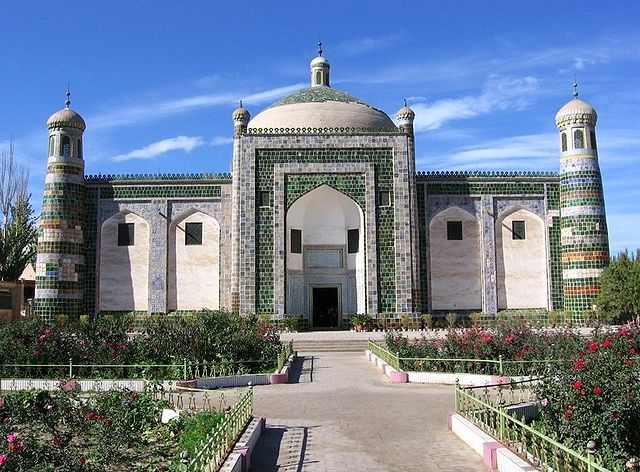
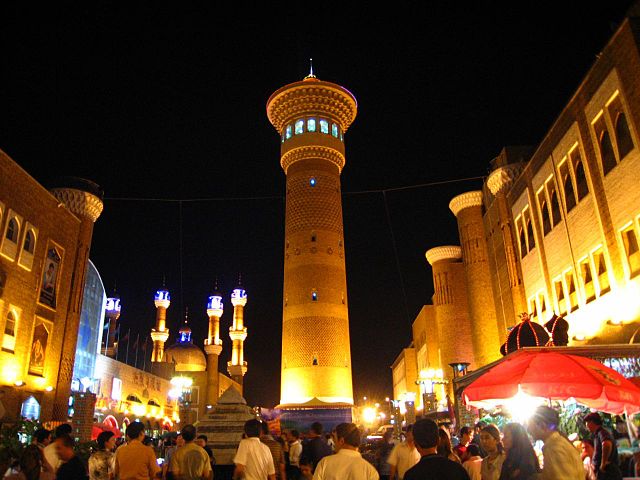
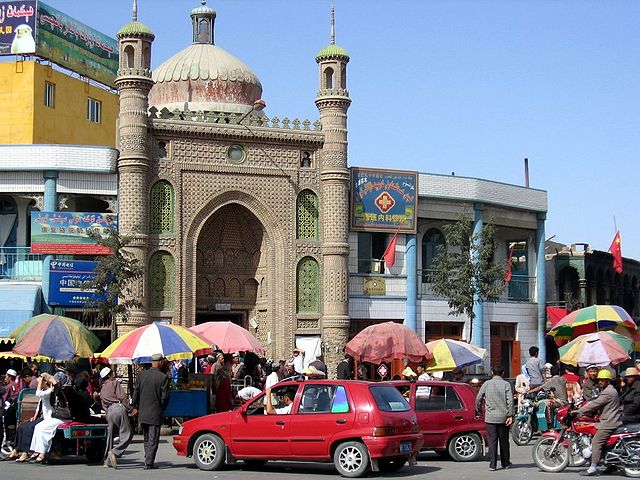
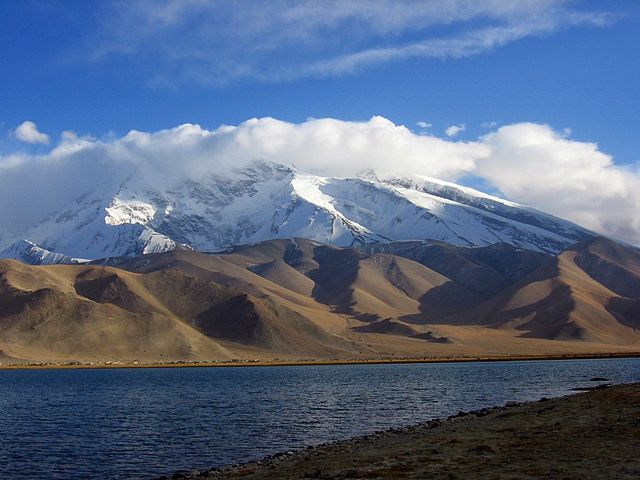
_(%2Ball_claims_hatched).svg.png)
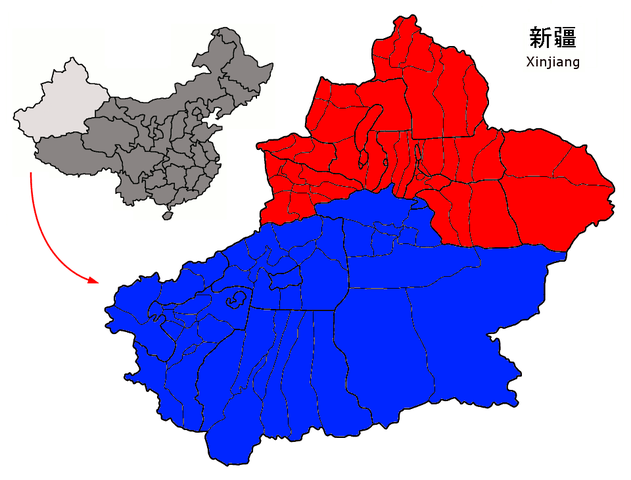
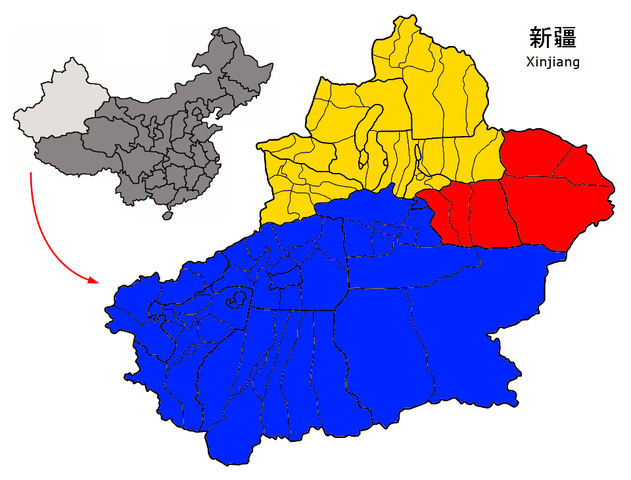
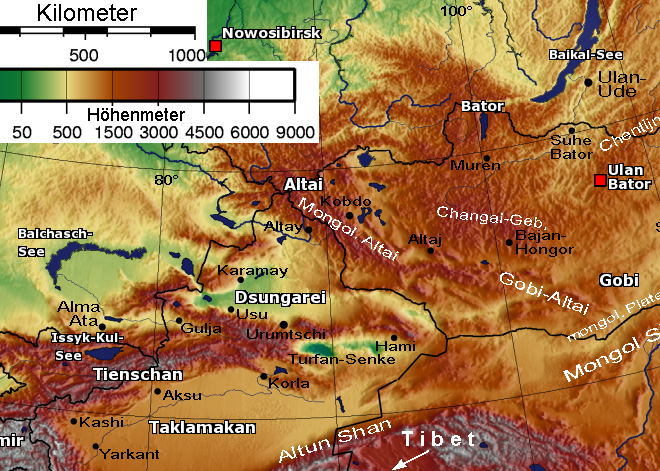
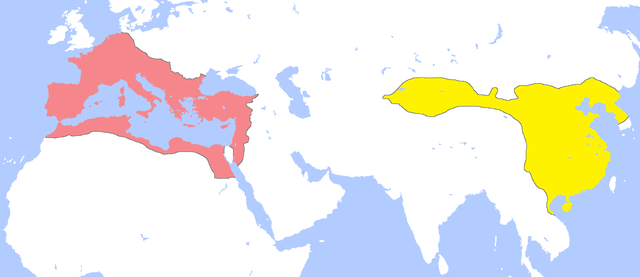
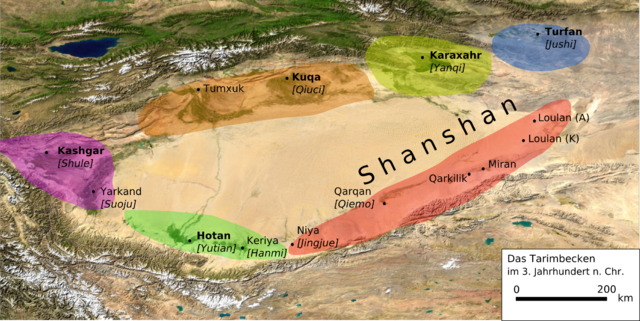
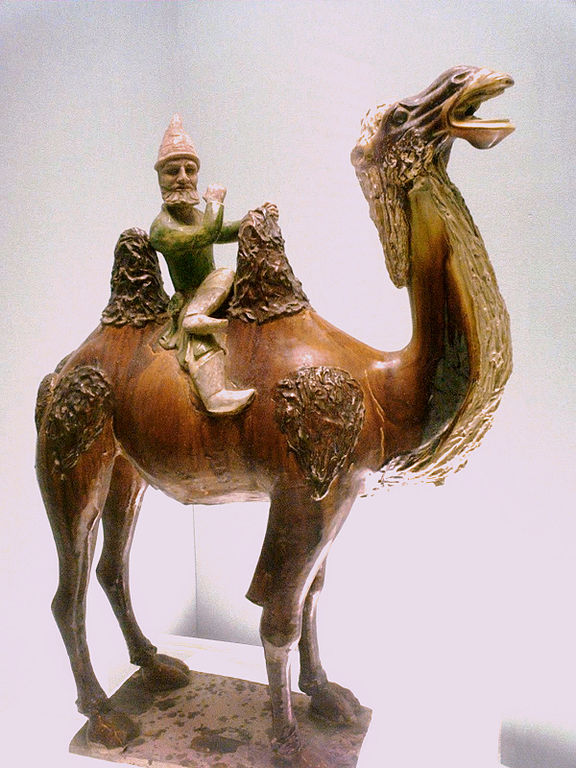


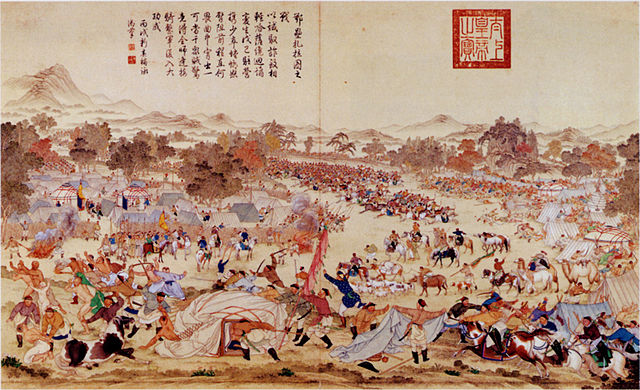
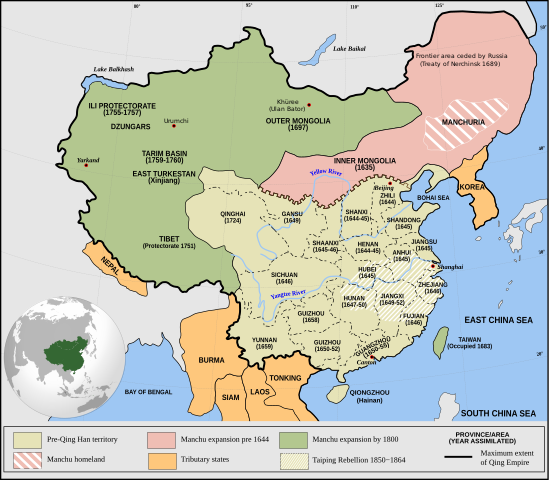
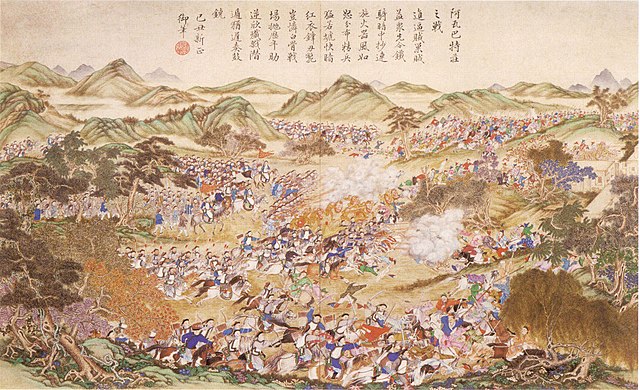
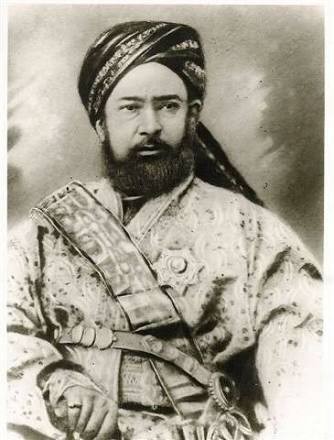

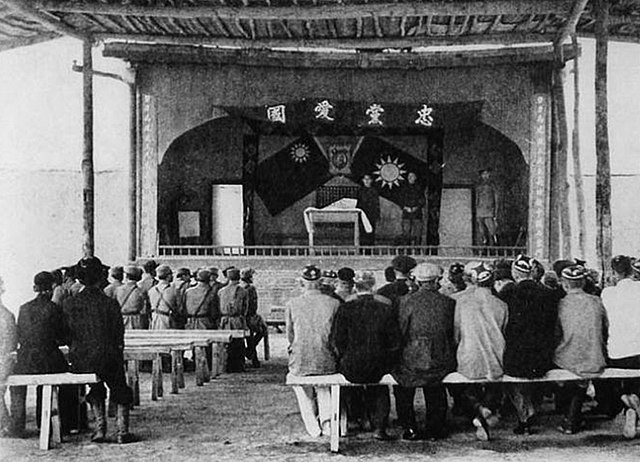
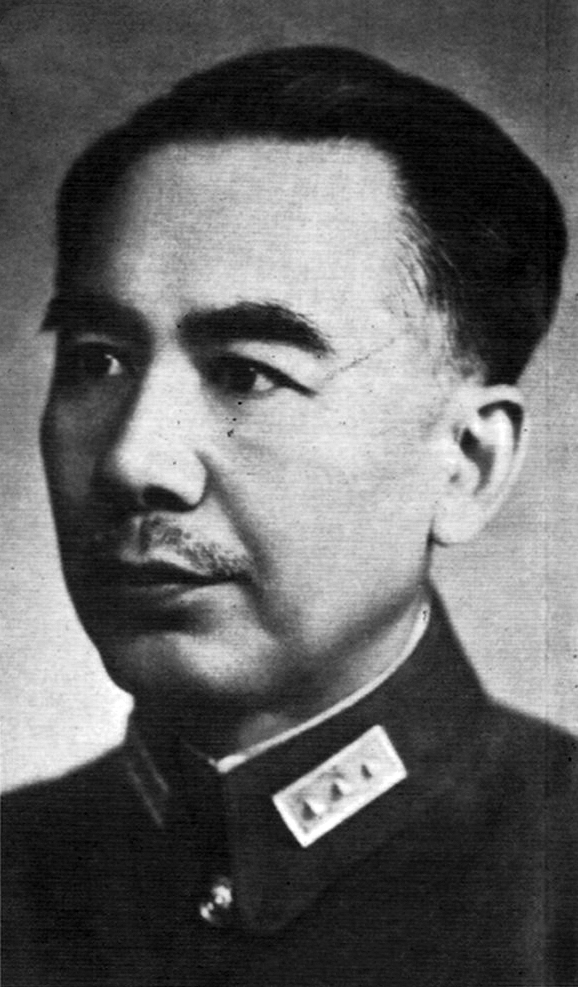
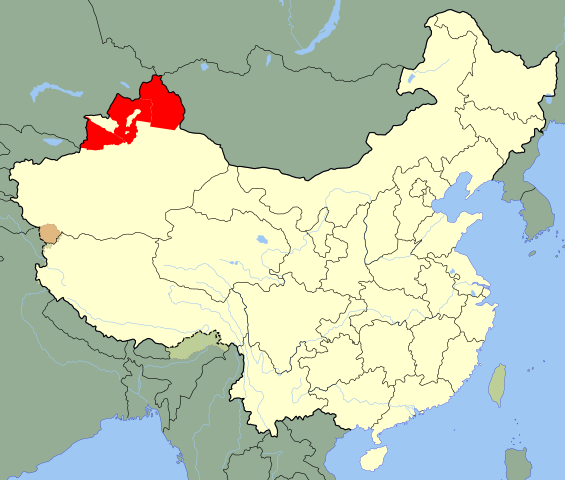
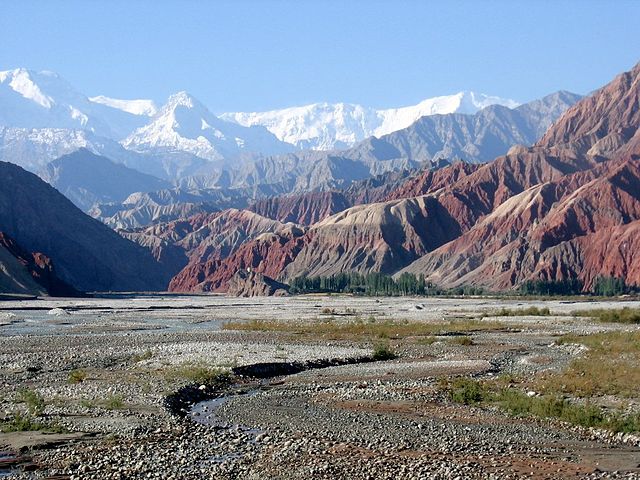
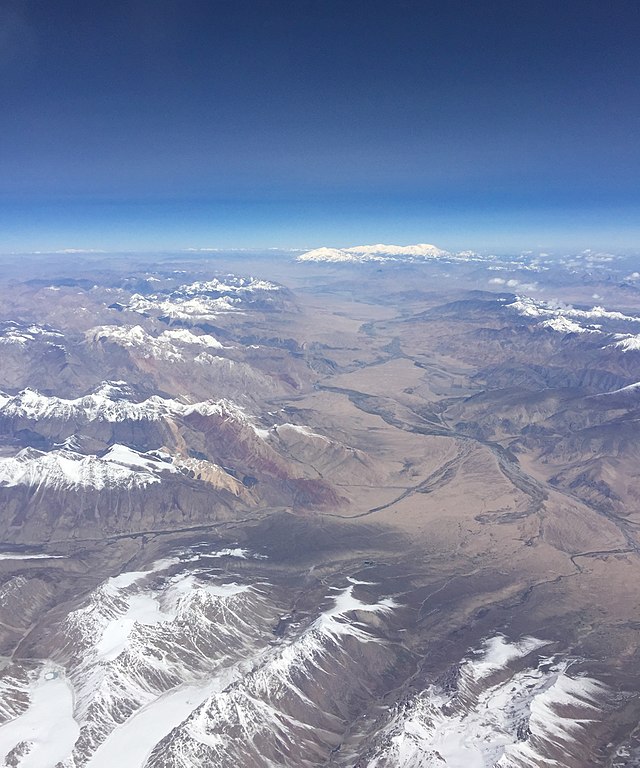
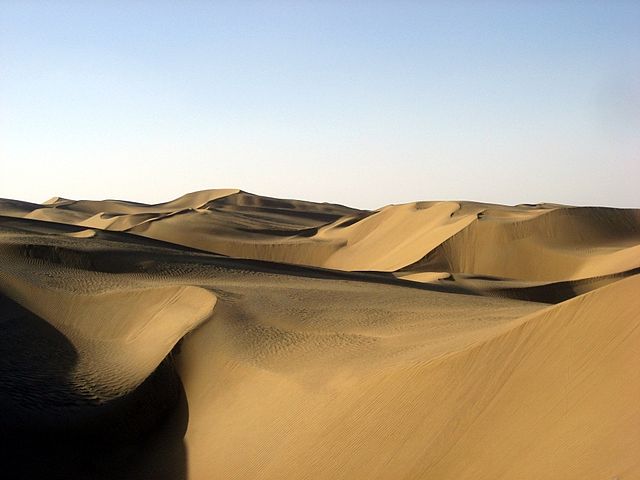
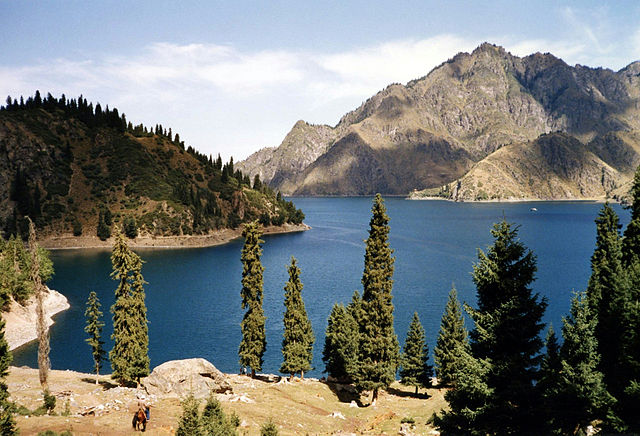
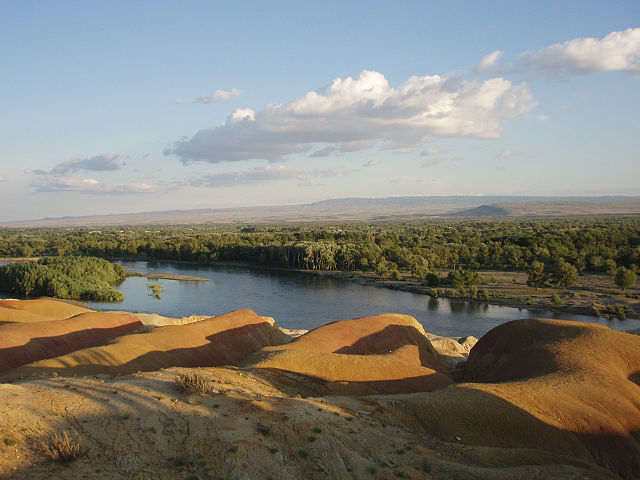
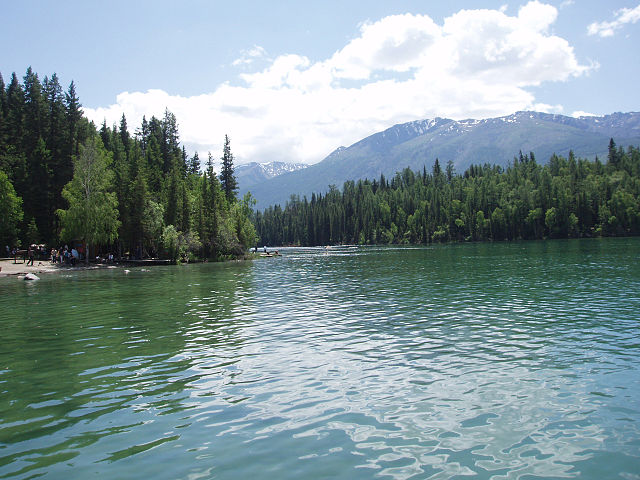
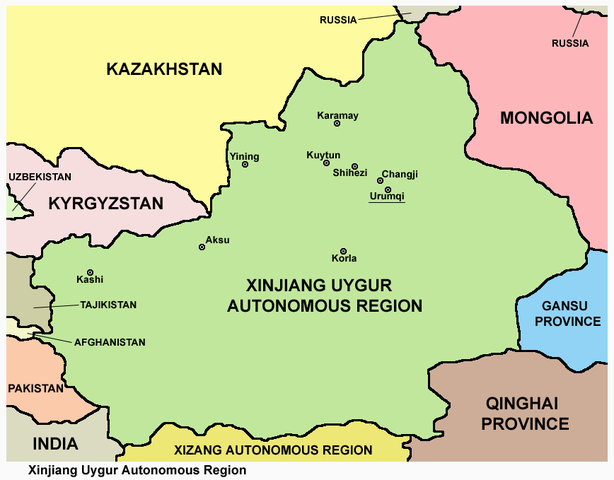
.jpg)
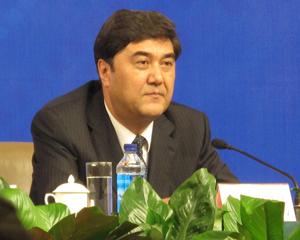
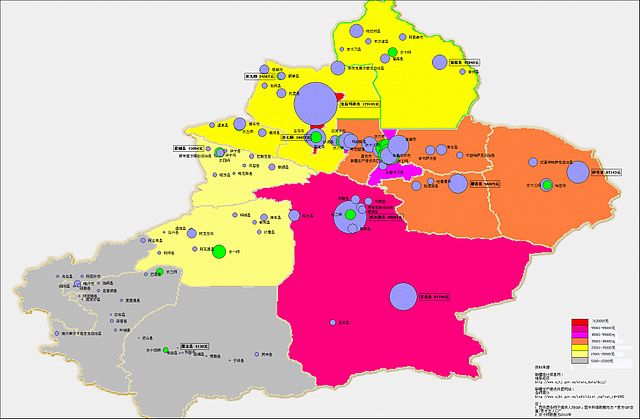
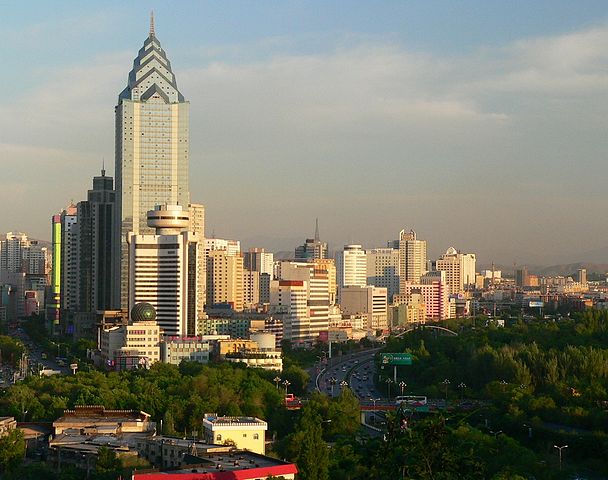
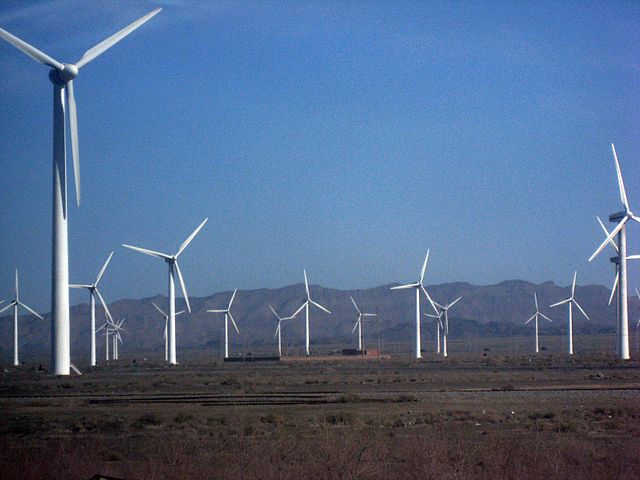


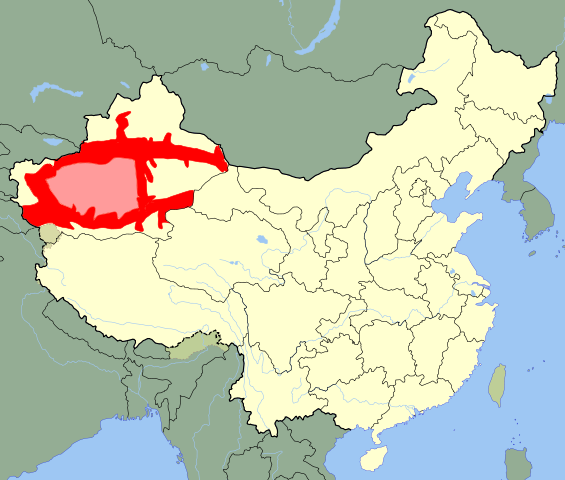
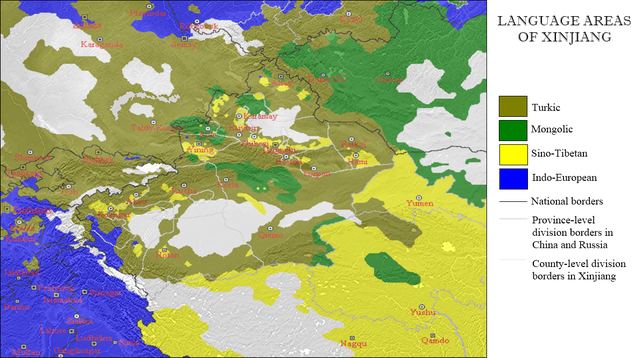
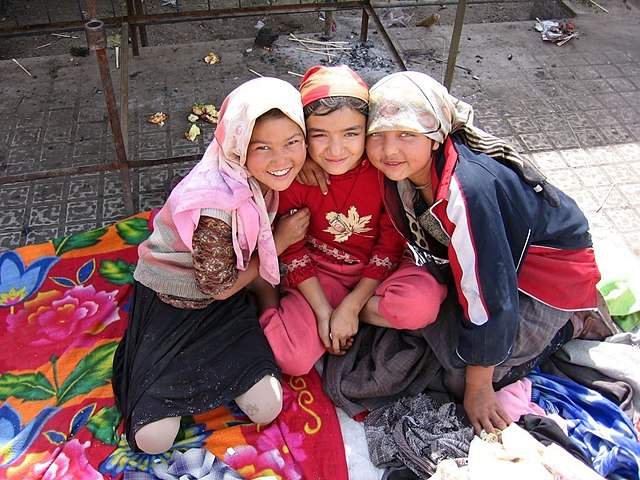
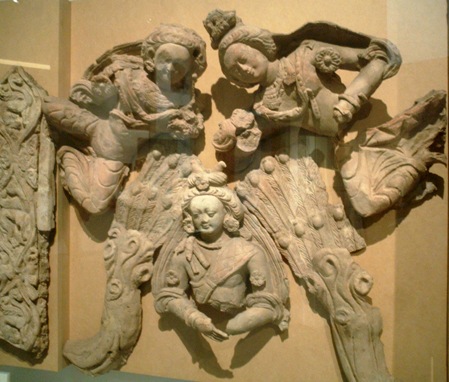
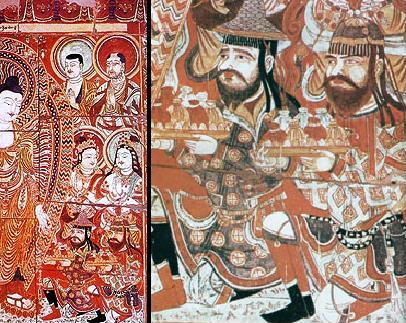

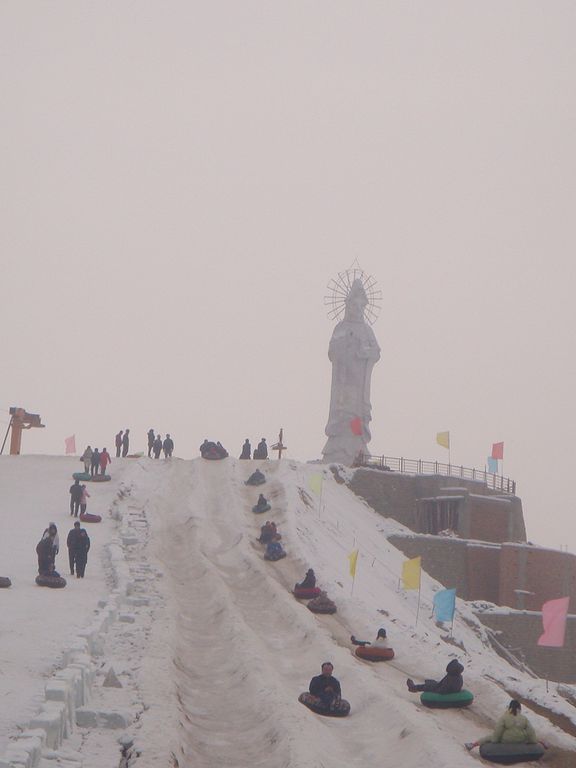
.jpg)
_Taoist_Temple_at_Tianchi_(Heavenly_Lake)_in_Fukang,_Changji,_Xinjiang.jpg)
.jpg)
